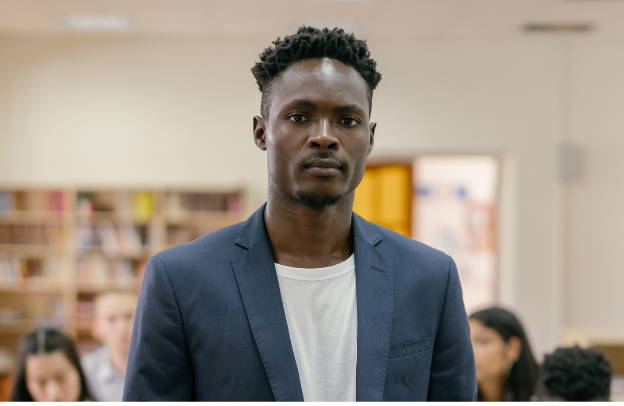How Memory Techniques Can Bridge the Literacy Gap

Imagine sitting beneath the shade of a sprawling tree, listening intently as your grandmother tells a tale about a clever tortoise who outsmarts a fierce lion. You laugh, learn, and, most importantly, you remember. This scene is not just a nostalgic memory; it exemplifies a powerful, time-tested way of learning through storytelling, a tool that has shaped education across African communities for centuries.
Learn How to Leverage Your Story through our Story To Asset Framework.
In many parts of Africa, especially places like Esanland in Nigeria, storytelling is more than entertainment. It is a crucial educational practice, passed down from grandparents to parents to children, that teaches morals, preserves history, and strengthens identity.
This traditional oral pedagogy leverages memory in ways modern classrooms can learn from, especially when addressing the persistent literacy gap across the continent.
The Power of Oral Culture in Education
In the publication, The Power of Oral Culture in Education, the chapter by Ardavan Eizadirad and Njoki Wane explores how oral culture can bridge literacy gaps by drawing on deeply rooted traditions of knowledge sharing.
Moving from theory to real-life applications in communities and everyday interactions, the authors highlight orality as a universal language that transcends generations, geographies, and cultural boundaries.
They emphasize how oral traditions, preserved and passed down by elders, knowledge-keepers, families, and community leaders, have sustained languages, customs, and identities over time.
Intentionally foregoing formal citations, the chapter itself models the power of orality by centering dialogue as a method of learning. Through a rich conversational exchange, Eizadirad and Wane reflect on their identities and experiences with proverbs, idioms, and storytelling as transformative tools in their personal and professional growth.
See also The Color Purple: 6 Lessons For Beginner Storytellers – Learning From The Masters
The chapter concludes with practical insights on how educators and communities can integrate oral traditions into teaching strategies, using storytelling not only to engage learners but also to confront and help dismantle systemic barriers to literacy and education.
The Power of Memory in Learning
Surprisingly, memory is often misunderstood as simply recalling facts for tests or exams. In reality, it is the process of connecting ideas, emotions, and experiences into meaningful networks inside the brain.
Neuroscientific research reveals that learning anchored in emotion and imagination creates stronger, longer-lasting memories. Stories, songs, and games naturally engage these faculties, making the learning process enjoyable and memorable.
Historically, African education systems have thrived on such memory-rich traditions. As documented by scholars like Ngugi wa Thiong’o, African children traditionally learned through oral narratives, music, dance, and proverbs—methods that not only made lessons easier to retain but also embedded cultural values and community identity.
These approaches help children develop not just academic skills but also social-emotional intelligence, critical thinking, and communication skills. A study published by UNESCO (2016) underscores that culturally relevant pedagogy boosts student engagement, retention, and achievement.
Challenges of Contemporary Education and Literacy
Despite significant investment in formal education, many African countries still face steep literacy challenges.
According to UNESCO’s Global Education Monitoring Report, nearly 60% of children in sub-Saharan Africa complete primary school without acquiring foundational literacy skills. The problem often stems from curricula and teaching methods disconnected from learners’ cultural contexts and lived experiences.
Traditional African memory techniques can help bridge this gap by making learning more accessible, engaging, and relevant.
Integrating Traditional Memory Techniques in Modern Classrooms
Incorporating storytelling, songs, proverbs, and role-play into classroom teaching has shown promising results across African education initiatives.
Storytelling Sessions
Storytelling allows students to engage actively with content and practice narrative skills. Teachers and parents can share traditional folktales that teach morals and cultural values, then facilitate discussions to deepen comprehension. This practice encourages oral literacy, listening skills, and critical reflection.
See also Memory as Heritage: How to Protect the Esan Identity Through Education
For example, in Kenya, the Storymoja Festival has demonstrated how storytelling revives interest in reading and helps children connect to their heritage.
Songs and Rhymes
Using songs and rhymes to teach foundational concepts like the alphabet, numbers, or scientific facts harnesses repetition and rhythm, key memory aids identified in cognitive psychology. These methods can especially support children learning in multilingual settings, where mother tongue instruction might be limited.
In Ghana, programs such as the “Let’s Read” initiative use songs in local languages to improve literacy and numeracy outcomes among early learners.
Role-Playing and Dramatization
Acting out stories or historical events helps kinesthetic learners and deepens understanding by involving multiple senses. Children internalize lessons better when they embody characters or scenarios.
In Uganda, the Kitengesa Community Library employs drama and role-play alongside reading sessions, which have measurably improved children’s reading fluency and comprehension.
Proverbs and Wisdom Literature
African proverbs are concise, metaphorical sayings that encapsulate wisdom. Teaching proverbs sparks conversations about life lessons and cultural values, promoting critical thinking and moral reasoning.
The African Storybook Project integrates proverbs into its digital storybooks to help children learn language nuances and cultural context, improving both comprehension and cultural pride.
Why Cultural Relevance in Learning Matters
When education reflects learners’ cultural backgrounds and everyday experiences, it resonates more deeply. Children don’t just memorize content; they internalize it as part of their identity. This cultural connection fosters pride, self-esteem, and intrinsic motivation—key ingredients for academic success.
Psychologists affirm that a strong cultural identity correlates with higher academic achievement and emotional well-being. Therefore, integrating African memory traditions in education not only boosts literacy but also nurtures confident, resilient learners.
Bridging the Literacy Gap: A Holistic Approach
To address literacy challenges sustainably, education policymakers and practitioners must blend traditional memory techniques with modern pedagogies. This requires:
- Curriculum reform that includes oral literature, songs, and proverbs alongside reading and writing.
- Teacher training focused on culturally responsive teaching methods.
- Community involvement to revive and support indigenous storytelling traditions.
- Accessible learning resources in local languages, such as those provided by the African Storybook Project.
- Research and evaluation to continuously refine memory-based learning strategies.
Conclusion: Harnessing Memory to Unlock Potential
The literacy gap in Africa is not just a matter of infrastructure or resources; it’s a challenge of engagement, relevance, and cultural connection. By embracing the power of memory through storytelling, songs, proverbs, and drama, we tap into deep-rooted traditions that make learning meaningful and memorable.
Memory is more than a cognitive skill; it is a bridge between the past and the future, connecting children to their heritage, identity, and potential. When children see their culture reflected in the classroom, their confidence grows alongside their literacy skills.
As education evolves, blending modern techniques with traditional memory practices offers a promising path to ensure every African child has the tools to succeed, building brighter futures one story, one song, and one proverb at a time.
Learn How to Leverage Your Story through our Story To Asset Framework.






